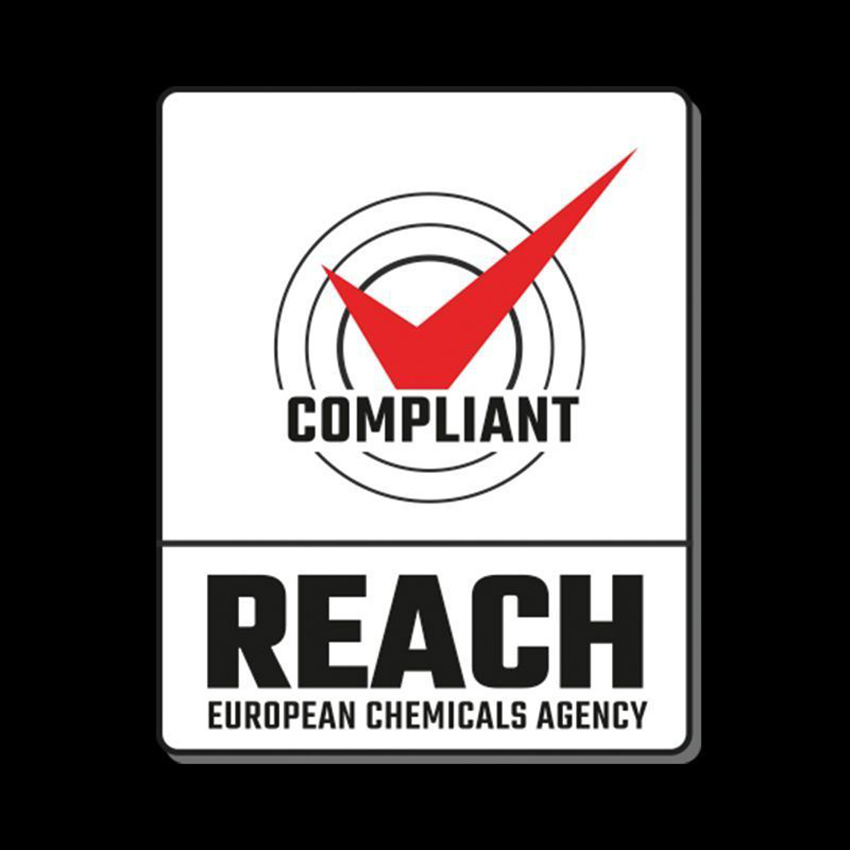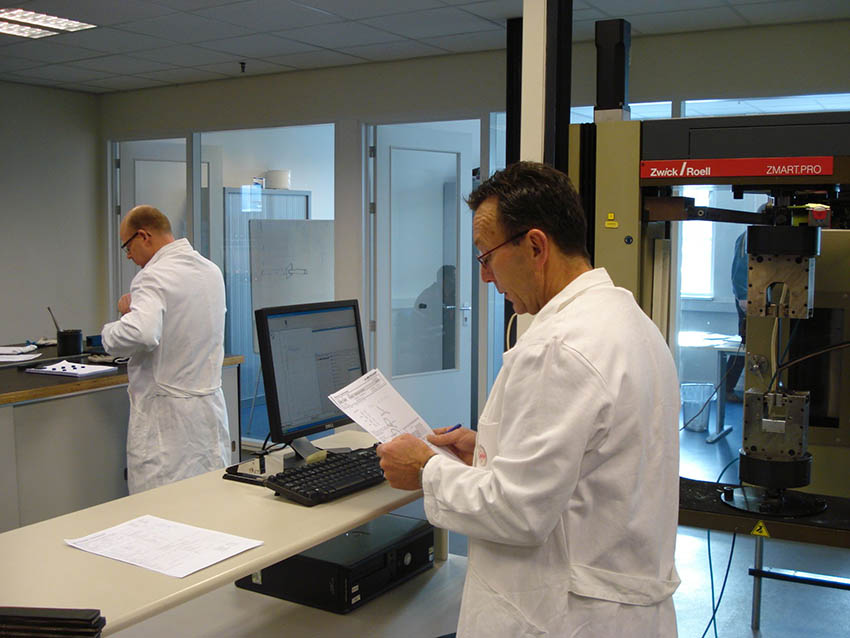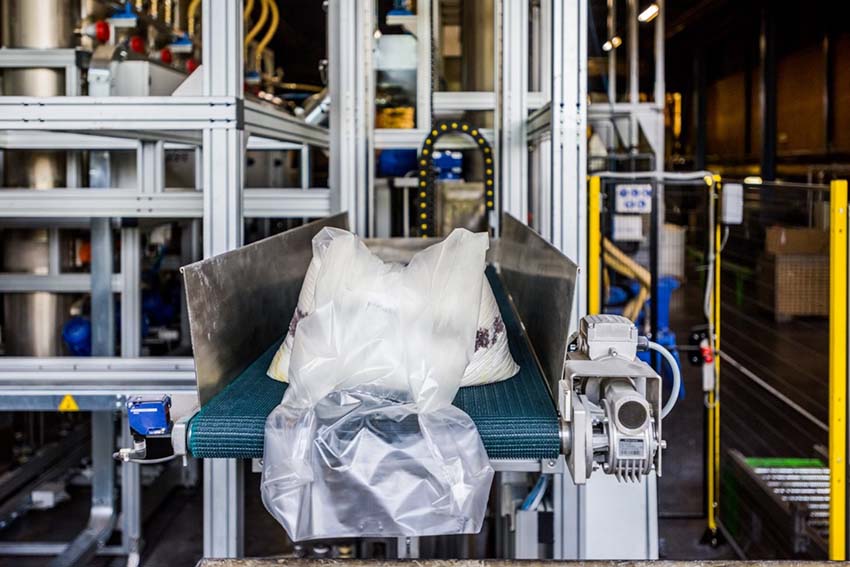Behind the scenes – how conveyor belt rubber is made and how it determines the performance and safety of the belts that you buy.
In the simplest terms, rubber multi-ply and steelcord belts consist of two constituent parts – an inner carcass covered by a protective layer of rubber known as the covers. Although both parts play a central role in enabling a conveyor belt to fulfil its purpose, there can be no doubt that it is the qualities and characteristics of the rubber itself that ultimately has the biggest influence on actual performance. Much is written and spoken about the different types of rubber covers needed for specific materials and working environments but rarely, if ever, is anything written about how the way the rubber is made determines the performance of the belts that you buy. Here, Les Williams of Netherlands-based Dunlop Conveyor Belting, lifts the lid on how the rubber we tend to take for granted is actually created.
A science in itself
Because of the its adaptability, the vast majority of the rubber used to make modern-day conveyor belts is actually synthetic or, at most, contains only a relatively small element of natural rubber. In basic scientific terms, the creation of rubber compounds (rubber compounding) is the process where a range of ‘specific task’ chemicals, reinforcements and anti-degradants are mixed together with rubber polymers.
The most common polymers used in conveyor belts are Styrene- Butadiene rubber (SBR) and Nitrile rubber (NBR). The chemical agents form chains of polymers to form rubber compounds that will ultimately be vulcanised to create the finished product. Vulcanisation is the process in which the compounds are chemically converted into a more durable final product by using heat and what are termed as ‘cross-linking agents’ such as sulphur or other accelerants. In short, it is a highly scientific process and even more complex when you begin to consider the multitude of physical properties and characteristics that the rubber covers of conveyor belts need to possess.
Meeting every need
Every type of rubber used on conveyor belts has to meet a considerable list of basic requirements so each has to be made according to a very specific recipe. These always include the basic ability to resist abrasive wear, otherwise the surfaces will wear down too rapidly. The rubber will also need to meet specific minimum requirements in terms of tensile strength, elongation (stretch), hardness (Shore), and resistance against tearing (tear strength). The list does not end there because every type of rubber cover also has to be able to endure potentially sub-zero temperatures (usually at least minus 20 or 30 °C) and, at the other end of the scale, withstand maximum continuous material temperatures as high as 80 °C. Then of course, there is the ability of the rubber to resist the seriously damaging effects of ground level ozone and ultra violet light (both sunlight and fluorescent light). Both of these last two properties require special additives being part of the rubber compound ‘recipe’.
As I said, those are just the basic requirements. When you begin to include ‘specialist’ rubber covers such as resistance against the effects of oil, chemicals, fire, extreme heat (up to 400 °C), extreme cold (as low as minus 60 °C), high impact, ripping & tearing and the numerous combinations of those qualities for multi-purpose belts such as oil and fire resistant for example, then the permutations become mind blowing. Last but not least, the rubber needs to be able to form strong, reliable splice joints. Being able to consistently achieve all of these requirements so that every individual batch of rubber compound is exactly the same as the previous batch is unbelievably challenging. All of this has to be achieved during the mixing process.
The mixing process
There are literally hundreds of different chemicals and ingredients used to make the huge variety of different rubber compounds that different conveyor applications demand. Perhaps the best analogy to use is that it is like making cakes that have to taste precisely the same every time. The mixing process is where all of the polymers, chemical additives, carbon black and zinc oxide are mixed together according to the specific recipe for the required rubber type. For accuracy and consistency, at Dunlop we use a highly advanced computerised, automated mixing carousel that places very precise measurements of each ingredient into biodegradable bags. These ingredients will be used to ultimately create a batch of compound weighing between 200-250kg.
The ingredients are then placed into a ‘coarse mixer’ as the first step towards blending everything into one. The total mix is then transferred into a mill, which blends the rubber until it reaches an evenly distributed consistency.
Different ingredients react differently and many are extremely sensitive to permanent damage if the machine settings and particularly the temperatures during mixing, are not exactly right for them. For example, additives used to create the all-important self-extinguishing properties in fire resistant belts can become almost totally ineffective if not mixed in precisely the right conditions.
Two become one
For this reason, some compounds need to start the mixing process as separate batches of ingredients. For example, Batch A may contain 90% of all the ingredients and Batch B may contain the remaining 10% that need to be mixed under slightly different conditions. When cooking a meal, a chef would not throw all the ingredients into one pot and cook them for the same length of time at the same temperature and that same principle applies to making a complex rubber compound. After the initial mixing, the two batches are then mixed together to form the final batch. In all cases, regardless of rubber type, not only does the rubber compound have to possess all of the requisite physical properties and characteristics, it must also be able to undergo the further processes involved in making a conveyor belt, such as calendaring for example.
The calendaring process is where the rubber compound material, which has been pre-softened by heat, is placed into the center of counter-rotating rollers. The rollers compact the rubber into a sheet as it passes through them. The thickness of the resulting product is determined by the gap between the cylinders, called the nip region. The rubber sheet can then be joined with a carcass fabric layer. After the sheet passes over cooling rollers it is then spooled into a roll with special anti-stick fabric placed in between to stop the surfaces sticking to one another. These huge rolls of unvulcanised rubber are then ready to be made into conveyor belts.
Safe to handle
As I have already mentioned, there are literally hundreds of different components that are used to create the various rubber compounds, such as anti-degradants, anti-ozonants and also as accelerators (essential for the vulcanisation process for example). These components include primary amine–based sulfenamides, such as N-cyclohexyl-2-benzothiazole sulfenamide, and thiazoles, such as 2-mercaptobenzothiazole. It is an inescapable fact of life that to make some rubber compounds it is necessary to use chemicals that are extremely dangerous in their own right. Fortunately for us all, at least as far as Europe is concerned, there are very strong regulations in place to protect humans and the environment in the form of REACH (Registration, Evaluation and Authorisation of Chemical substances) regulation EC 1907/2006, which came into force in June 2007.

REACH regulations stipulate that all European manufacturers (not just those who make conveyor belts) are legally obliged to comply with the regulations relating to chemicals, preparations (mixtures) and substances used to create finished products. Although not commonly known by consumers, the use of “substances of very high concern” listed within the regulations must be registered with ECHA (European Chemical Agency) headquarters in Helsinki.
Perhaps not surprisingly, some European manufacturers have chosen to ignore this legal requirement, either completely or at least partially because of the impact on production costs. Manufacturers located outside of EU member states and the UK are not, of course, subject to the regulations. Neither are they subject to EU regulation concerning Persistent Organic Pollutants (POPs). This means that they are free to use unregulated raw materials even though those same materials may be entirely prohibited or at least have strict usage limitations within the European community.
Something smells wrong
One of the biggest concerns involves short-chain chlorinated paraffin’s (SCCP’s). These are commonly used to accelerate the vulcanizing process. REACH regulations clearly stipulate that SCCP’s should either not be used at all or at least only used on a very restricted basis because of their category 2 carcinogenic classifications. Their presence can usually be identified by the unpleasant smell of the rubber whereas good quality rubber usually has very little smell at all. It is not for me to point the finger at others so all I will say on this subject is that at Dunlop Conveyor Belting we are very proud that, to the very best of my knowledge, we were the very first conveyor belt manufacturer to achieve full compliance.
Home made
In real terms, only a limited number of actual conveyor belt manufacturers exist, certainly in Europe anyway. Apart from ourselves, virtually all other European manufacturers import belting from outside of Europe to some degree. This is done to supplement their own production. What is certainly a growing trend is for manufacturers to outsource the manufacturing of their rubber compounds (again, mostly from outside of Europe) rather than produce them in-house. The advantage is that specialist rubber compound manufacturers are able to minimise production costs by mass-producing rubber compounds in extremely large quantities. The downside, however, is that it makes it much more difficult to ensure the consistency of properties throughout each production run and, indeed, between batches of rubber produced at different times. It is also almost impossible to apply quality control disciplines. Another downside is that some compounds have a ‘best before’ shelf life so they need to be used before some important characteristics start to diminish.
Other cost cutting practices include the use of bulking agents such as chalk and/or increasingly larger proportions of recycled scrap rubber, often of highly questionable origin. For me, the key word is ‘control’ because another thing we are immensely proud of in Dunlop is that we manufacture all of our conveyor belts ourselves, including the rubber, using our own facilities and our own people. We develop our own rubber compounds and we have an ongoing R & D program to further improve existing compounds and create new ones such as our BV GT, which is simultaneously resistant to oil, fire, heat, abrasion, ozone & ultra violet light. In short, every batch of rubber used on our conveyor belts is home made. Pure and simple. In our opinion, it is the only way to be absolutely sure that every belt of every type that we produce will have identical properties and achieve exactly the same standards of quality and performance every time.
Les Williams






